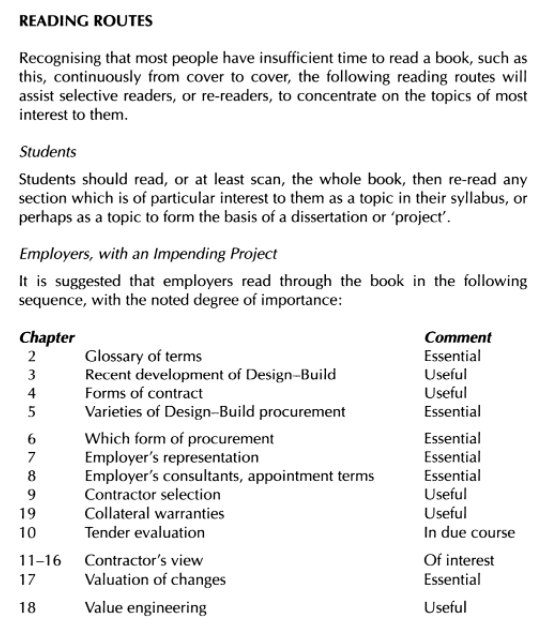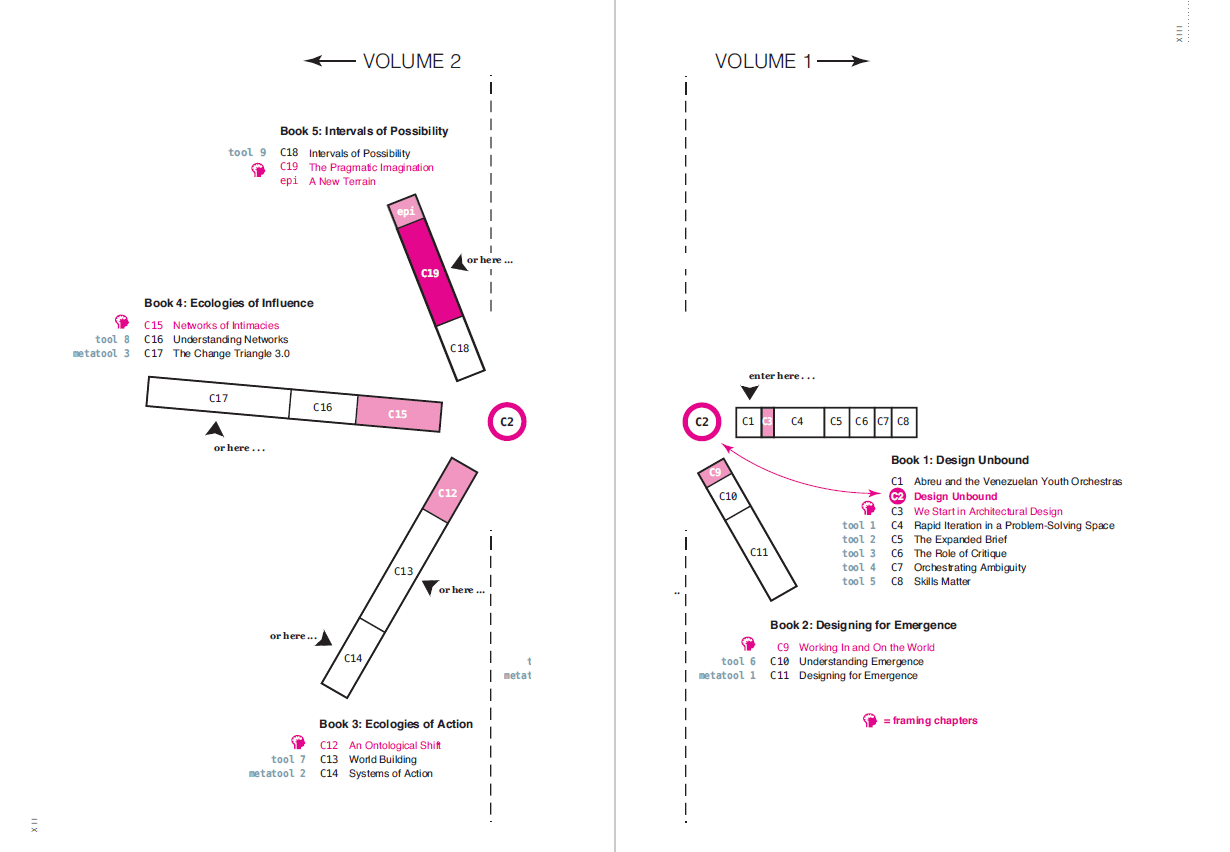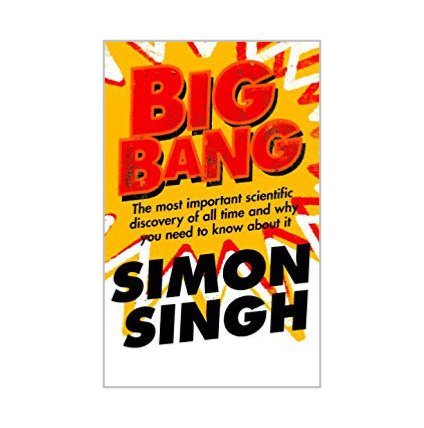Introduction
Most non-fiction books have an implied linear reading route. The author would generally like you to start at the beginning of the book and then read all the way through to the end.
However, this can be unnecessarily restrictive for many readers and not actually meet their needs.
A few authors have developed additional non-linear reading routes which allow readers to navigate books in alternative ways. This blog post provides examples of eight reading routes, divided into three different categories:
- routes that cater to people with different interests
- routes that help the development of skills or capabilities
- routes that help to explain the big picture.
1. Catering to people with different interests and needs
The most common non-linear reading route helps readers to find chapters or sections of a book that are of particular interest or relevance to them.
This is one of the simplest types of alternative reading route and can be effective when there is a clear division between different topic areas and when chapters or sections are able to stand on their own.
Here are four examples of this type of reading route.
1.1 Design-Build Explained

The earliest use of the term ‘reading routes’ that I’ve come across in this context is in David Janssens’s 1991 book Design-Build Explained.
The chapters have different relevance for each of the book’s different audience groups (students, employers, architects and engineers, quantity surveyors and contractors). So, at the beginning of the book, the author has told each of the groups how relevant each chapter is to them. The categories he’s used are:
- Essential
- Useful
- Of interest
- In due course.
1.2 The researchEd Guide to the Curriculum

In The researchED Guide to the Curriculum (2020) edited by Clare Sealy and Tom Bennett, the editors provide a ‘Suggested route map through the book’.
They have identified three key topic areas of interest to readers and have suggested relevant chapters for each of them.
1.3 Stop Talking About Wellbeing


In her 2020 book Stop Talking about Wellbeing, Kat Howard has suggested the most relevant chapters to read for teachers at different stages of their career:
- trainee/NQT
- experienced teacher who is enjoying their work
- leading a team
- senior leader
- someone who wants to leave the profession.
She writes:
“These suggestions make for great starting points if you plan to dip in and out and may help you to find your own point of clarity. I am mindful that at our most busy, or mentally unrested, consuming an entire book can be incredibly daunting. If this applies to you, just pick a starting point and go from there.”
1.4 Design Unbound
In their 2018 two-volume work Design Unbound: Designing for Emergence in a White Water World, Ann Pendleton-Jullian and John Seely Brown have provided a graphic suggesting different options for reading the book (Volume 1 and Volume 2).
They have also provided an elegant description of how the work is structured and the different choices available to readers.
“For reasons already touched upon, this work is different than a manual, academic theorizing, philosophical reflection, or proposition. Yet, arising from real work on real projects of sociotechnical complexity, it is all of these. So how best to read this book? We suggest that it need not be read linearly. While organized in sequence for coherence, it can be read in different ways. For some, the concepts and theory might be most interesting, while others will want to get straight to some of the case studies and tools, tracking back to concepts, where valuable. The full work has a coherent narrative arc, but each book also has its own three-chapter narrative arc, and each chapter is a minibook. Nesting inside each other, the chapters can stand alone, the books can stand alone, and the volumes have their own individual coherence. Books can be shuffled. Chapters can be shuffled. The volumes can be flipped. Entry points and pathways through the work have been suggested below. But in the end, the agency we strive to scaffold depends on the way the whole gives more than the sum of its parts, no matter how the reader journeys through it.”
I love their innovative graphic, which gives an excellent idea of the spaciousness of the content and the shape of the two volumes. However I think the authors would have increased its usefulness if they had provided more detail about the topics covered by each book and chapter.
(H/t: David Chapman.)
2. Helping the development of skills and capabilities
I think multiple reading routes are particularly useful for readers of ‘how to’ books.
People aiming to develop a new skill or capability will vary in their goals, their existing skills and the resources they have available. Providing additional reading routes helps each reader to cater to their own different needs and requirements.
2.1 Advanced Presentations by Design

Andrew Abela has developed different reading routes through his practical ‘how to’ book on presentations Advanced Presentations by Design according to the time available before the presentation needs to be given.
Some readers may have weeks to develop their presentation and so have time to go through the whole book. Others may have much more pressing deadlines so need to access useful information much more quickly.
As a result, he has created three different reading routes.
- For readers who have to deliver a presentation in the next few hours, he provides a stripped-back process: “jump ahead to Figure C.1 in the Conclusion to this book, which contains ten quick questions that will help you decide whether your presentation is going to be effective or not, and if not, where you should focus your efforts to fix it”.
- For readers who have a little more time with a presentation scheduled for, say, the next day, he suggests the following: “read the first page of each chapter—nine pages in all—and this will give you a sufficient overview of the whole method”.
- For readers who are under less time-pressure, Abela suggests either following the detailed step-by-step process outlined in the book or focusing on individual areas where they have the most room for improvement.
2.2 Dual Coding with Teachers
I worked with Oliver Caviglioli to develop the reading routes for his 2019 book Dual Coding with Teachers.
The problem with ‘how to’ books in general is that they are often read for interest and enjoyment but readers don’t then put in enough practice time to actually improve their skills.
As well as describing the conventional linear reading route, Oliver divided exercises in the book according to the level of skill needed and came up with Novice, Intermediate, Proficient and Advanced Routes.
The goal was to provide beginners with exercises that would deliver quick successes and then use this sense of achievement to encourage them to move on to the more advanced paths.
2.3 Deploy Empathy

In the ‘Skipping Around’ chapter in her book on interviewing customers Deploy Empathy: A Practical Guide for Talking to Customers, Michele Hansen has identified the specific business problems that her readers might have and then suggests the most relevant content from the book for each of the problems.
The problems she addresses are:
- You have an idea and want to evaluate it
- You’ve created something and want feedback
- You have something launched and want to figure out why people aren’t buying/why they’re dropping off
- You want to get more customers
- You want to know why people cancel
- You want to figure out what you should build next for an existing product
- You’ve done interviews but aren’t quite sure what to do with the results.
3. Explaining the big picture

Reading routes that explain the big picture allow readers to get a general overview of a book before they start diving into the detail.
Christopher Alexander’s 1979 book The Timeless Way of Building provides a very interesting approach.
Alexander identified two of the key problems that many non-fiction books have:
- Many readers will start a book but then give up before they finish so they’ll never get a sense of the book’s ideas as a whole.
- The linear nature of most non-fiction books means that that the reader can still be encountering points that add to the meaning of the whole right up to the end of the book. This means that they can only get a sense of the whole once they have completed the book, which can reduce overall understanding.
To address these problems, he has italicised the key parts of the book (ie. the introduction and conclusion to each chapter as well as some key sentences within each chapter) which allows readers to get an overview of the book as a whole and then, as they read through the book, to relate the detail to the context of the whole.

Alexander explains this on the page of instructions he gives about the alternative reading route at the beginning of the book.
“What lies in this book is perhaps more important as a whole than in its details. If you only have an hour to spend on it, it makes much more sense to read the whole book roughly in that hour, than to read only the first two chapters in detail. For this reason, I have arranged each chapter in such a way that you can read the whole chapter in a couple of minutes, simply by reading the headlines which are in italics. If you read the beginning and end of every chapter, and the italic headlines that lie between them, turning the pages almost as fast as you can, you will be able to get the overall structure of the book in less than an hour.
Then, if you want to go into detail, you will know where to go, but always in the context of the whole.”
While I believe Alexander’s analysis of the problem is completely right, there are two particular problems with his approach. Firstly, it’s hard work to leaf through over 500 pages to identify the italicised text and I didn’t find doing that conducive to extracting an overview of the book.
Secondly, I think that a summary which takes an hour to read is providing too much detail to give readers a useful initial overview. I believe it’s more effective for readers to be given a shorter overview that may take them 15-20 minutes to read and then to additionally provide more detailed summaries for individual chapters. I explain this approach in more detail in my paper on multi-level summaries.
Conclusion
At the moment, the use of multiple reading routes is still incredibly rare. However I hope the examples I’ve shown here give some idea of their potential.
If you’re an author or publisher interested in developing reading routes for a particular book, please do get in touch. I’d also be very interested to hear from you if you’ve come across any other examples of reading routes.
Further examples
Examples of three more non-linear reading routes can be found here – www.francismiller.com/non-linear-reading-routes-part-2.












